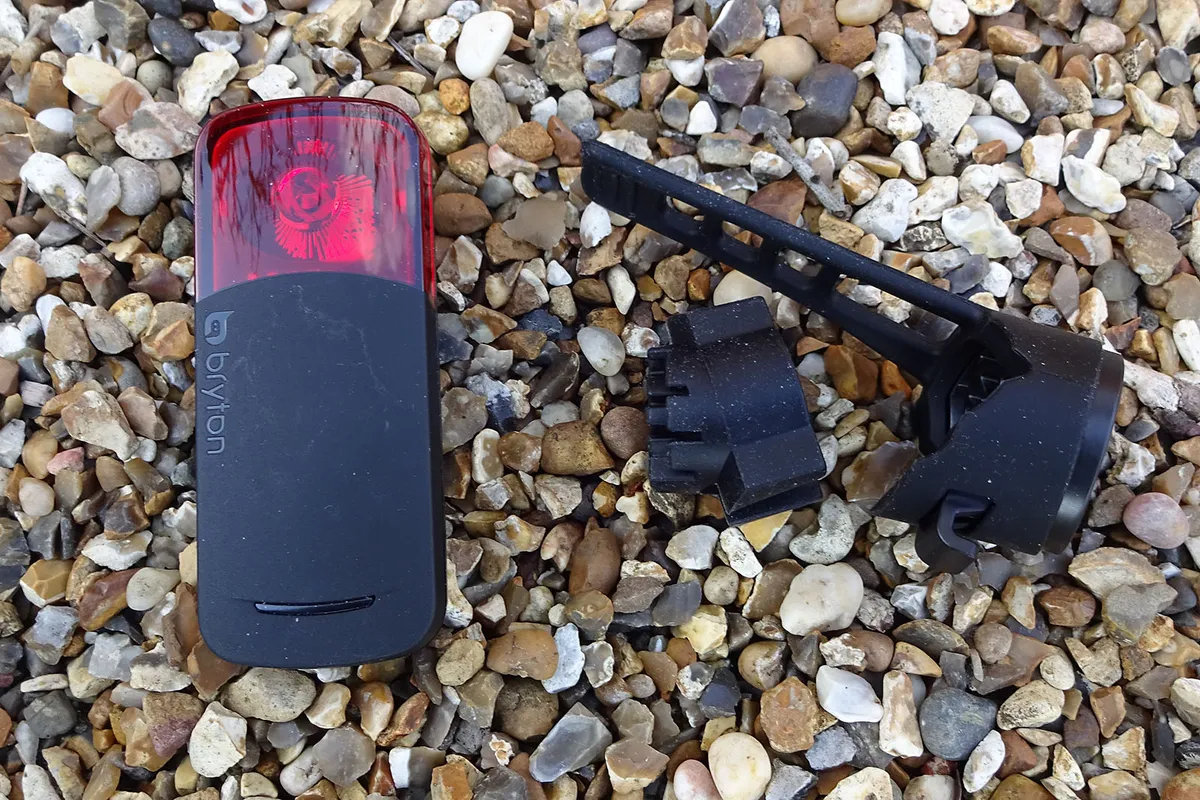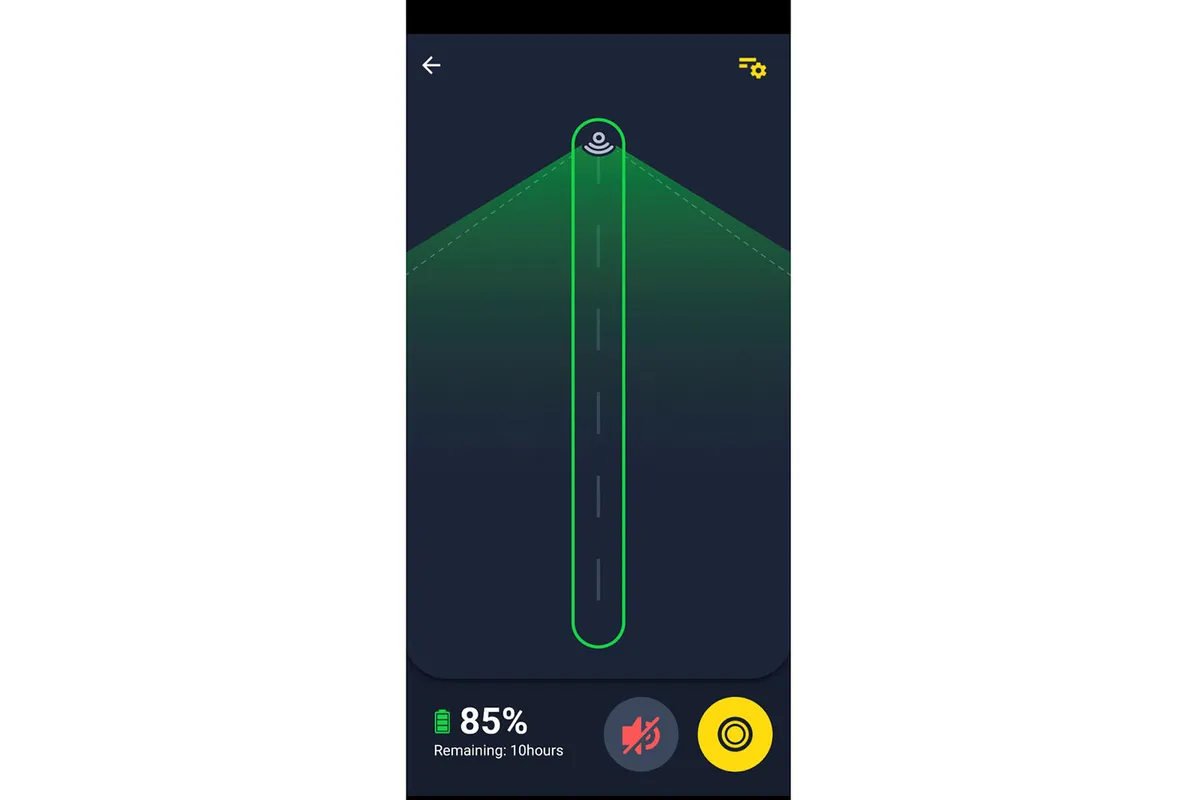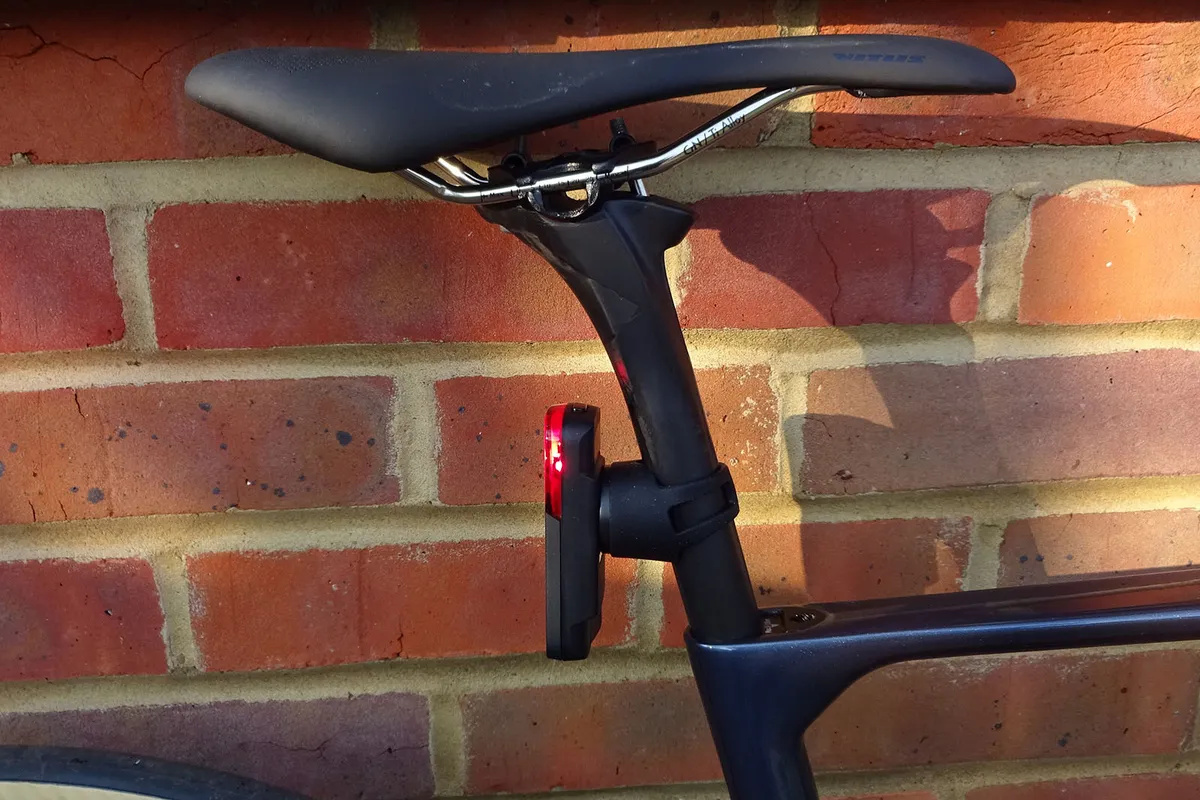The Bryton Gardia R300L adds to the increasing range of radar rear light products available. These devices are designed to detect vehicles approaching from behind and alert you to their approach, and how close they are.
It’s a useful addition that can serve to increase your situational awareness.
Bryton’s entry into the market is the Gardia R300L, and my testing has revealed generally solid performance.
Vehicles were detected consistently despite one unexplained connection dropout, and although there are a couple of quirks to be aware of, it’s proved a useful and relatively cheap radar device.
Bryton Gardia R300L specifications

The Bryton Gardia has the near-standard elongated body format seen commonly with other rear-view radars. A red rear light is enclosed in the top of the unit’s body, and the radar element occupies the lower portion.
There’s a power switch on the top of the unit and a USB-C charging port behind a bung on the lower rear.
The Gardia R300L mounts to your seatpost via a quarter-turn bracket. This attaches to the seatpost via an integrated rubber ladder strap that angles it almost horizontally backwards.
It’s similar in size to competitors from Garmin and Magicshine, although its plastic case is square rather than oval.
Notably, a few grooves around its edges and back form traps for dirt sprayed up from your rear wheel. That said, the Gardia R300L carries an IPX7 water-resistance rating, so you can scrub it down to keep it clean.
There are five output modes from the light, with two flashing and two static options, as well as a group-ride friendly 12-lumen mode. Output is up to 73 lumens for the day flash and claimed run times are between 8 and 17 hours.
You can also use the radar function only, which gives a claimed 24-hour run time.
Bryton Gardia R300L ride experience

The Bryton Gardia R300L connects to a bike computer using ANT . There’s also a phone app, which works with Bluetooth and enables you to use a smartphone as a head unit.
The app provides unit configuration and firmware updates.
As with other rear-view radars, the Gardia will detect a vehicle approaching from the rear a significant distance before most come within earshot.
It will send an alert to a compatible bike computer – most newer computers support the protocol – which will sound an audible alert.
A thin display on the left or right side of the computer screen will change colour from green to amber, and display the approaching vehicle as a dot that gets closer to the top of the screen as the vehicle approaches.
Multiple vehicles in convoy are usually displayed as separate dots, while a fast-approaching vehicle causes the display to turn red. Once all those detected have passed, the computer will sound an all-clear tone and the side display will turn green.
Bryton Gardia R300L vehicle detection and light

All rear-view radar units act in a similar manner, relying on the relative speed of an approaching vehicle for detection. The Bryton Gardia R300L consistently detected approaching vehicles during testing.
However, it’s important to note that a vehicle travelling at the same speed as you will not be detected, so any vehicle waiting behind you for a safe point to pass will vanish from the radar.
I found I couldn’t assume an all-clear tone meant that there was nothing behind me.
That said, the Bryton Gardia R300L was particularly useful when there were multiple vehicles in convoy passing, when the amber warning showed there were still vehicles to pass.
It also works well on fast descents, when you want to keep your attention on what’s ahead, but still need to be aware of what’s happening behind.
Overall, the Bryton Gardia R300L performed broadly consistently, but around halfway through one ride it stopped transmitting data to my head unit, although the flashing rear light was still functioning.

I reported this to Bryton, but it wasn’t able to provide an explanation. Luckily, this was a one-time occurrence, but demonstrates that while radars are useful aids, they shouldn’t be relied upon fully.
I also experienced one instance of an approaching vehicle not being registered. This is something that can happen with any radar system in my experience though, and reinforces the message that the tech is intended only as an aid.
The Gardia has five lighting modes, as well as a radar-only option.
There’s a single LED with a wide-angled lens, while the upper sides of the case are translucent, so the light is visible from the side. Bryton says this gives 220 degrees of visibility.
The Gardia app also enables you to set up the light as a brake light, shining more intensely when the unit detects deceleration.
Otherwise, the app is fairly basic, with a few settings dedicated to when you’re using your phone (instead of a cycling computer) as a head unit, such as whether it vibrates or makes a sound when a vehicle is detected.
The phone app radar display also shows the radar’s battery level, while if you’re using a cycling computer, you’ll receive an alert when the Gardia’s battery is running low, with the format determined by the computer brand.
How does the Bryton Gardia R300L compare to the competition?

As of May 2023, the rear-view radar space was quite sparsely populated, with only Bryton, Magicshine and – most notably – Garmin selling units.
Garmin has the greatest number of options. Its Varia RCT715 includes a camera as well as a radar and rear light. It's an expensive option, though, currently costing £350.
If you opt for the Garmin Varia RTL515, which is most comparable in terms of features, the price drops to £170 – but that’s still a £50 premium over the Bryton unit.
The closest competitor to the Bryton Gardia is the Magicshine Seemee 508 at £129.99, although that unit has a lower lumen output and shorter claimed run time.
Bryton Gardia R300L bottom line

Broadly speaking, the Bryton Gardia R300L does a good job of keeping you aware of what’s happening behind, and offers respectable value.
Like other radar devices, it’s not a substitute for keeping alert though, and it doesn’t detect vehicles in all situations.
However, keep this in mind and it’s a useful tool to boost awareness that’s not a lot more expensive than the best rear bike lights.
Product
| Brand | bryton |
| Price | 130.00 EUR,120.00 GBP,130.00 USD |
| Weight | 70.0000, GRAM () - as tested - |
Features
| br_lightType | rear |
| br_integratedBattery | yes |
| Features | Dimensions: 97mm x 40mm x 21mm Water resistant: IPX7 Seatpost mount weight: 26g View angle: 220° Modes: 5 plus radar-only Maximum output: 73 lumens Maximum run time: 17 hours claimed, 24 hours radar-only |
| br_outputLumens | 73 |
